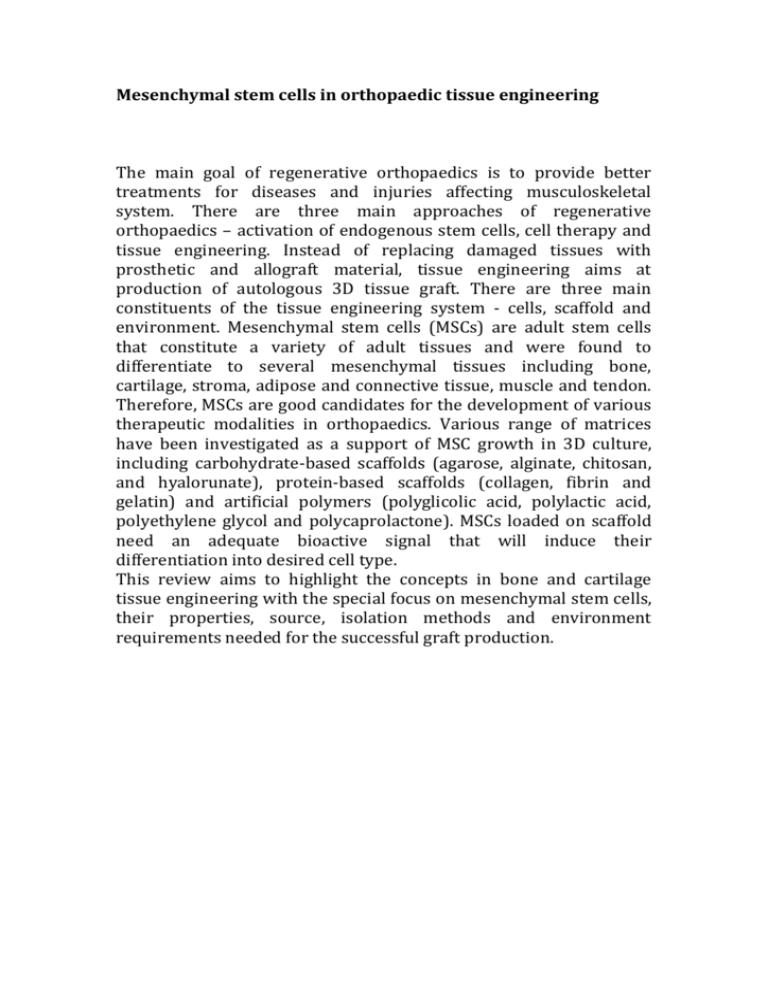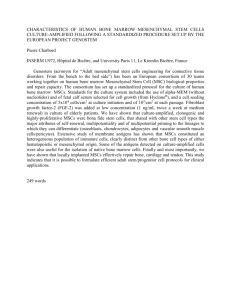Mesenchymal stem cells in orthopaedic tissue engineering
advertisement

Mesenchymal stem cells in orthopaedic tissue engineering The main goal of regenerative orthopaedics is to provide better treatments for diseases and injuries affecting musculoskeletal system. There are three main approaches of regenerative orthopaedics – activation of endogenous stem cells, cell therapy and tissue engineering. Instead of replacing damaged tissues with prosthetic and allograft material, tissue engineering aims at production of autologous 3D tissue graft. There are three main constituents of the tissue engineering system - cells, scaffold and environment. Mesenchymal stem cells (MSCs) are adult stem cells that constitute a variety of adult tissues and were found to differentiate to several mesenchymal tissues including bone, cartilage, stroma, adipose and connective tissue, muscle and tendon. Therefore, MSCs are good candidates for the development of various therapeutic modalities in orthopaedics. Various range of matrices have been investigated as a support of MSC growth in 3D culture, including carbohydrate-based scaffolds (agarose, alginate, chitosan, and hyalorunate), protein-based scaffolds (collagen, fibrin and gelatin) and artificial polymers (polyglicolic acid, polylactic acid, polyethylene glycol and polycaprolactone). MSCs loaded on scaffold need an adequate bioactive signal that will induce their differentiation into desired cell type. This review aims to highlight the concepts in bone and cartilage tissue engineering with the special focus on mesenchymal stem cells, their properties, source, isolation methods and environment requirements needed for the successful graft production.











